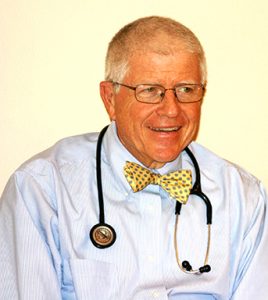
My perspective on moving forward from COVID-19
It is hard to believe the knowledge we’ve gained in just a few months about SARS-coV-2, the novel coronavirus that causes COVID-19. But the descriptor ‘novel’ is important in understanding why uncertainty and confusion surround every aspect of COVID-19, from the illness itself to government decision-making to media reporting. We don’t know exactly how infectious it is, the actual pathologic processes that occur in an infected person, or yet have effective prevention or treatment options. In this blog, I’ll share what we’ve learned to date, and how this will inform our plans for safely re-opening Iowa City.
What we’ve learned about COVID-19 contagion
Seasonal flu is considered moderately contagious – each person who gets it spreads the flu to one or two others. It is currently believed that COVID-19 is more contagious, with each person spreading it to two or three others. Even that small incremental increase has led to a rapid spread of COVID-19 in communities across the country. Additionally, patients with COVID-19 appear to be most contagious one or two days before symptoms appear, so they unknowingly spread the disease, and quickly.
Why we locked down
Initial epidemiologic models projected our healthcare system would be overwhelmed with many patients critically ill from COVID-19, causing a shortage of intensive care beds, ventilators and personal protective equipment (PPE) needed for taking care of the sick. These models envisioned an increased number of COVID-19 deaths due to the lack of medical equipment and pointed to a future need for rationing supplies. Compounding this was the concern that if many of our respiratory therapists, nurses and doctors became ill, a shortage of healthcare professionals would occur as well.
The contagion factor of COVID-19 being spread by people who did not yet know they were ill led to the initial shutdown of schools, workplaces, churches and everything else. Because we couldn’t identify who was infectious without symptoms today, but would be sick two days from now, we asked everybody to shelter in place…today and tomorrow and the next day. In the absence of vaccines or medications, the return to quarantines, an old but effective method of reducing the spread of infectious disease, was the only way we had to ‘flatten the curve.’ This would not reduce the total number of people who became sick with COVID-19, but slowing the pace of infections and not overwhelming hospitals was critical to helping patients survive.
Where do we go from here?
We know we cannot continue to live in a complete lockdown without significant adverse effects on our economy, the education of our children, and our emotional and spiritual well-being. Safely re-opening Iowa City will continue to be a combination of trial and error, with a healthy dose of common sense. Medical science can guide us, but we have no certain answers nor guaranteed directions on how to get safely from here to there. What we can do is design protocols and systems that make sense now, but understand that we will need to continually modify them as new information becomes available.
Safely re-opening
Based on what we’ve learned to date, the best practices for safely re-opening Iowa City should include:
- Limit exposure for the most vulnerable populations. The elderly and those with multiple chronic medical problems who are at higher risk for severe illness from COVID-19 need to continue sheltering in place as much as possible and limiting their social contacts.
- Be vigilant. When going out, those at higher risk need to be especially conscious to social distance at six feet, wear N95 face masks, repeatedly wash their hands and not touch surfaces where the virus might live for days.
- If you have been exposed to COVID-19 we have two different options. One is to self- quarantine at home for 14 days. The other option is nasal swab testing for the acute infection itself, done locally at Mercy Hospital or the Mercy outreach facility in Coralville; or antibody testing for evidence of the prior or ongoing infection, available at the Larew Internal Medicine office for members of my practice. Please contact our office if you have questions.
- Incorporate social distancing, face masks, handwashing, and other hygiene measures into daily life. We must all be responsible for taking every measure we can to provide a safe environment for our customers, clients, students and employees, and make them feel assured we consider their health and safety the top priority. Our safety protocols include spreading out appointments to minimize the number of people in the office at any one time, thoroughly wiping down exam rooms after every use and surfaces of common areas throughout the day, continuous handwashing and required wearing of masks by staff and patients.
